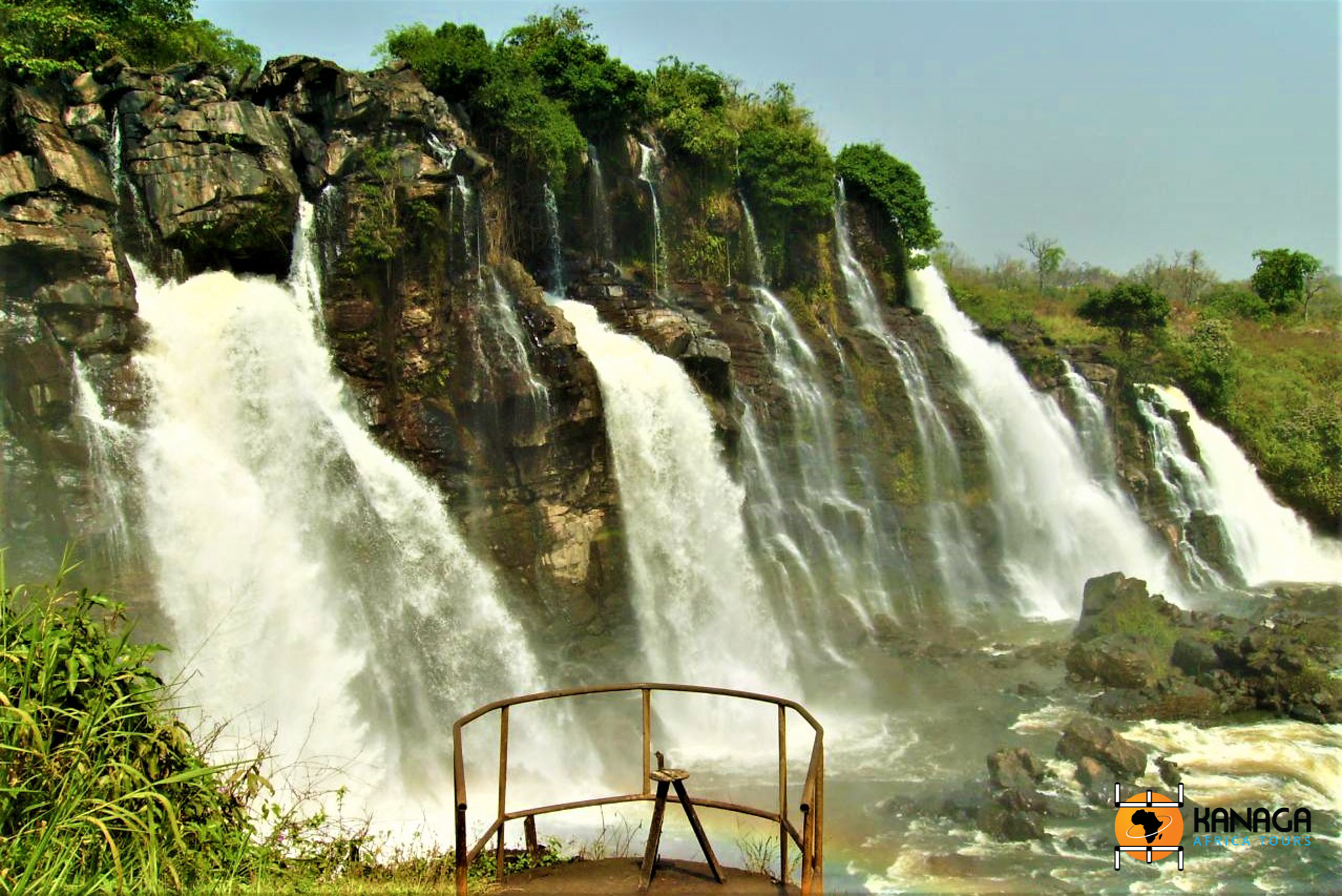Bangui is a fascinating city, for the natural scenery in which it is set and because of the multicoloured mix of cultures it hosts. Rather than a modern city, it appears more like an agglomeration of administrative, commercial, residential and suburban districts, the latter more like traditional rural villages, each inhabited by one of the many ethnic groups that make up the colourful Central African people.
Embedded to the northeast by the tropical contours of the green Gbazaganzi hill and to the south by the banks of the Oubangui River, a tributary of the Congo, Bangui resembles a city garden, where you can find maize fields and plots of cassava in the centre. If the agricultural peoples are distributed in the inland districts and on the outskirts, the fishing peoples have built their settlements on the river areas, while the administrative buildings and residential neighbourhoods, modern and colonial, are concentrated at the foot of the hill and among the dense forest that dominates the panoramic setting on the summits.
It is an intriguing city, where spirulina and MOCAF‘s industrial beverages are produced with great success, but also where an old airstrip has become a thoroughfare and where landmarks (in the interior of the country) are marked ballistically, starting with “PK0″, which equates to the city centre, where Independence Square is located. Thus, when arriving, for example, at the decentralised but quaint Ouango market 5km away, it is simply called ‘PK5′ or ‘5 Kilo’.
There is no shortage of colour and characteristic scenery in Bangui ‘la coquette‘. The silvery river with its fishermen’s pirogues, the spectacular rapids to the east of the city’s course, the equatorial hill described poetically by André Gide at the beginning of the 20th century, the bustling markets, the street vendors, the gardens and orchards, the bustle of people, pirogues and taxis, the modern administrative buildings and colonial ones, the traditional houses in the suburbs; everything gives the city a typically African atmosphere, more like a large rural settlement than a capital.
Not to be missed are the Beafrik‘Art craft centre, with exhibitions of traditional art and local craft workshops, but above all the Art and Popular Traditions Museum, housed in the historic residence of Barthelemy Boganda, the nation’s beloved father, which displays interesting artefacts and objects from Central African ancestral traditions, including those of the Aka Pygmies and the Peulh Bororo.
But the area around Bangui offers the strongest emotions in contact with nature and the most profound traditions, from excursions along the river, among fishing villages and artisan factories of ngouli (manioc and corn distillate), to the magnificent Boali waterfalls to the north-west of the capital, the most imposing in the country, which plunge in a whirlwind of vapours and jets, from about fifty metres down the Mbali River, amidst a mixed scenario of tropical forests and tree savannahs. Heading west towards the pygmy region of Lobaye and Sangha-Mbaeré, at PK55, the palm oil extraction factory and the traditional artisanal fermented wine may be worth a stop, while a little further on, the Mausoleum and Imperial Court of Bokassa in Barengo is a must-see, a surreal place, now half-abandoned and decaying. This place is still in the hands of the military, which reveals, with a little imagination, what must have been the splendour in which this controversial dictatorial figure, who crowned himself Emperor, lived, amid crystal chandeliers, audience halls, private wives’ rooms and Olympic-sized swimming pools. Suffice it to say that this imperial complex, residential, military and administrative, is equipped with secret underground passages, for which the architects and engineers employed in its construction were later assassinated by Bokassa himself, to prevent them from divulging the plan to any enemies.





